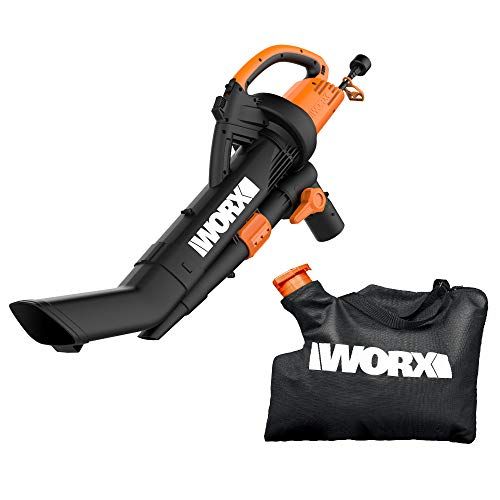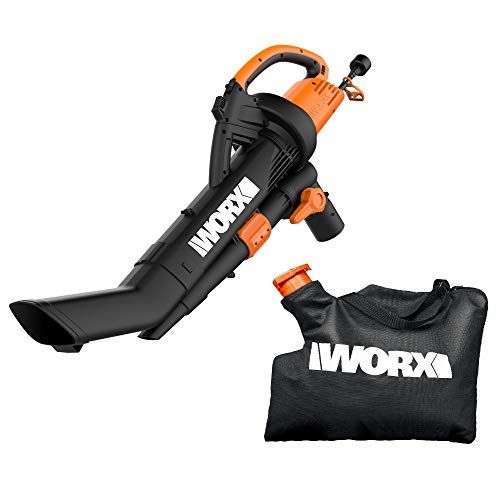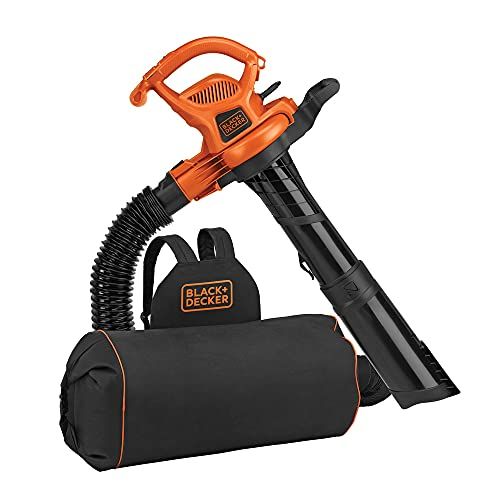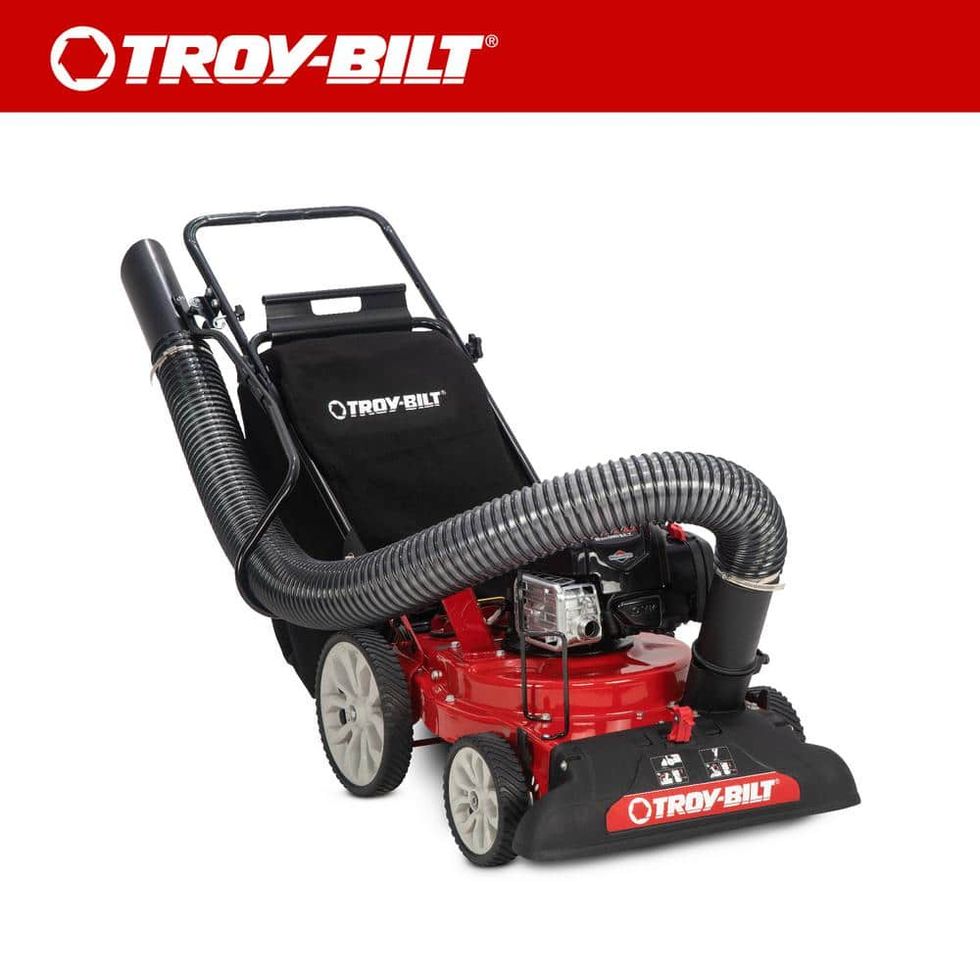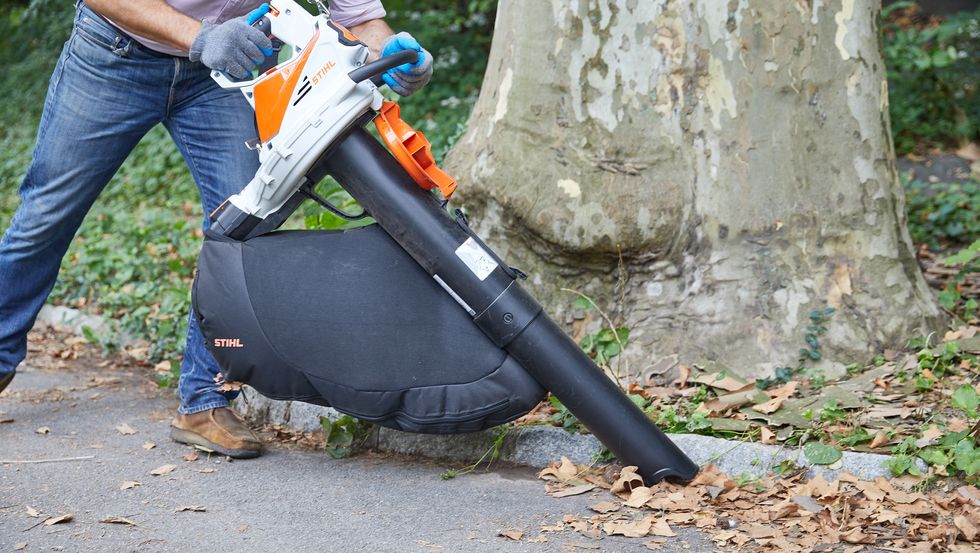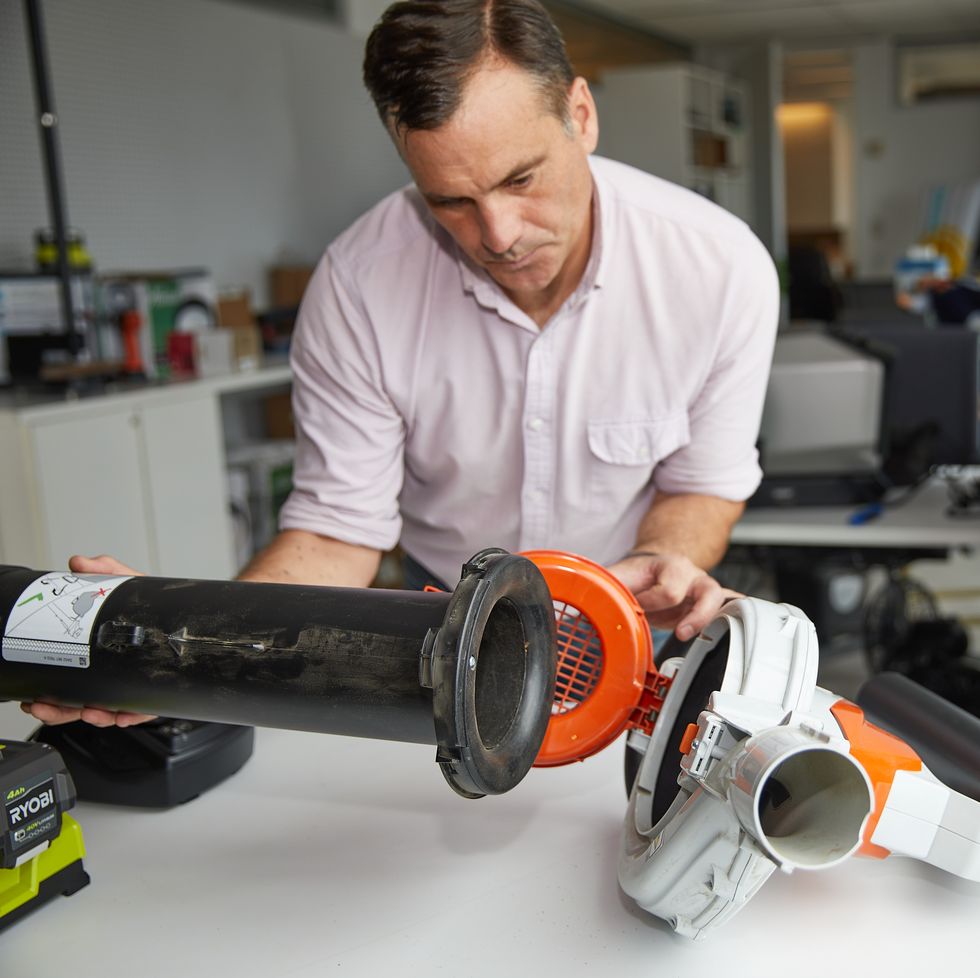A leaf vacuum is the perfectionist’s outdoor power tool, great for sucking up every last leaf from under bushes and around foundation walls. It’s also helpful for homeowners who have to bag their leaves, rather than blow them to the curb, since most leaf vacuums feature mulching capabilities that let you hoover up many more leaves into a single bag.
Can’t decide between a leaf blower and a leaf vacuum? You don’t have to! That’s because most of the top picks from Good Housekeeping Institute’s latest tests are multi-purpose machines that perform both tasks. As with other outdoor power equipment that passes through the Home Improvement & Outdoor Lab, from pressure washers to snow blowers, our experts considered performance, ease of use, durability, noise and more in their assessment of more than 20 leaf vacuums. Here are the 10 that made the cut.
Our top picks:
After checking out our picks, read on for more details on how our testers choose the best leaf vacuums, plus everything you need to know to find the right model for your home. You can also pick up other expert advice on yard care, including tips for mulching and our latest round-up of top-rated lawn mowers.
Best Overall Leaf Vacuum
Worx Electric Trivac
Our experts like the versatility of the corded-electric Worx Trivac, a powerful three-in-one blower, vacuum and mulcher that handles each task with ease and efficiency, which the 5600+ five-star reviews on Amazon attest to. In our testing, it was particularly adept at scarfing up leaf fragments and other small debris. “I like that it’s equipped with an on-board conversion switch, so that you can flip between functions quickly and without the hassle of separate tubes and attachments,” says Rachel Rothman, Chief Technologist at the Good Housekeeping Institute, who tested the Worx over several weeks at her home on Long Island, NY.
She notes that the curled end of the vacuum tube was helpful for sucking leaves from gutters and other hard-to-reach places. The Worx’s metal impeller has an 18:1 reduction ratio, meaning it can mulch 18 bags of leaves down to one, and this model comes with a 10-gallon reusable collection bag. While it’s also very quiet, the big downside is the cord, which is a nuisance to drag around and also means you’ll need an exterior-grade extension cord if you have a large yard.
Best Value Leaf Vacuum
Sun Joe Electric Handheld Blower/Vacuum/Mulcher
This budget-friendly three-in-one leaf vacuum, blower and mulcher performed as well as some models costing two and three times as much. “Like its cold-weather brand mate Snow Joe, whose snow blowers we’ve tested, Sun Joe has established itself has a value-driven name in outdoor power equipment that often punches above its weight,” says Rothman. The device’s 14-amp motor blows up to 240 miles per hour with six adjustable speeds so you can tailor it to various tasks, and testers say it’s easy to switch between modes. Rothman also called out the dedicated gutter cleaning kit, with its 15-foot telescoping attachment that allows you to blast leaves out of gutters from the safety of the ground. Though the manufacturer doesn’t list its noise rating, testers found the motor on the Sun Joe to be relatively quiet.
Best Heavy-Duty Leaf Vacuum
Stihl SHA 56 Shredder Vacuum/Blower Kit Vacuum
Stihl’s outdoor power equipment has impressed our testers with its combination of exceptional power and quiet operation — the latter being critical in municipalities with strict noise ordinances. The SHA 56 2-in-1 vacuum blower lives up to the same high standard. The battery-powered machine was an absolute beast in our tough field tests, sucking up all manner of yard debris and shredding it into a coarse mulch that allowed testers to reach maximum capacity in the 10.5-gallon bag. “Despite all that stellar sucking power, the Stihl was one of the quietest leaf vacuums we tested,” says Alec Scherma, test engineer at the Good Housekeeping Institute.
It’s a great fit for homeowners whose yard contains a lot of rough debris, including twigs, acorns and the like. The SHA 56 is also a superb leaf blower for those who have to contend with a thick blanket of leaves come autumn. Take note, however: The machine has separate tubes for its vacuum and blower modes. While making the conversion was fairly straightforward in our tests, it’s not as easy as flipping a switch, a convenience found on models that use the same attachment for both modes. Plus, the extra parts require more storage space. But in the end, we think that’s a small price to pay if your priority is maximum toughness and power in a leaf vacuum.
Best Variable-Speed Leaf Vacuum
Toro Electric Ultra Blower Vacuum
This Toro is another plug-in leaf vacuum that scored points with our testers for its combination of power and lightweight design. “It’s a great choice for homeowners with small- to mid-size yards,” says Rothman, who notes that the Toro is an easy to use and affordable option that gathered and removed leaves quickly in our tests. Our experts like the variable speed control, which seamlessly allows you to adjust the power in both vacuuming and blowing modes. The device is also easy to operate, thanks to its push-button electric start and quick-release latch that lets you switch from blowing to vacuuming without tools. But you will need to contend with the power cord, plus the added cost of an exterior-grade extension cord if you have a lot of ground to cover.
Best Large-Capacity Leaf Vacuum
Ryobi 40-volt Handheld Blower/Vacuum/Mulcher
Ryobi’s 40-volt leaf vacuum is a great pick if you have a lot of leaves to sweep up, thanks to its massive 600 CFMs of vacuum power and its ample 10.5-gallon bag. The Ryobi also has an industry-best 20-to-1 mulching ratio, so it’s excellent at reducing leaves to a fine matter, getting the most capacity out of every bagful. “The one drawback is the metal impeller was a little more prone to jamming when sucking up harder stuff like twigs,” says Scherma. “But this is the perfect vacuum if you’re primarily clearing lots of loose leaves from your lawn.”
It converts from vacuum to blower mode with the turn of a knob on the main handle, but you also need to switch attachments, so it’s not the most convertible combo we tested. The Ryobi is also on the expensive side, but it’s important to note that the kit includes a pair of 4.0 Ah batteries, which together delivered more than 30 minutes of run time in our tests, even when operating the variable speed motor at full tilt.
Best Lightweight Gas Leaf Vacuum
Husqvarna Gas Blower Vacuum
Don’t want the hassle of a cord? A gas-powered leaf blower is the way to go, especially if you’re also looking for maximum power. This Husqvarna gas-powered leaf vacuum can move a lot of air in a hurry — 425 cubic feet per minute at a speed of 170 miles per hour. Our experts say it should perform capably whether you set it to vacuum, blow or mulch leaves and other yard debris. The lightweight construction and ergonomic design maximize comfort and control, while the cruise control setting is nice if you have a lot of leaves to suck up and don’t need to switch speeds. Just be prepared for the noisier operation, which is loud enough that you’ll want to wear ear protection.
Best Value Gas Leaf Vacuum
Craftsman Gas Leaf Blower
This Craftsman features a robust gas-powered engine that generates a solid combination of air speed and flow. Our experts say the vacuum’s lightweight design reduces hand and arm fatigue. They also like the feature set, which includes a translucent fuel tank and a variable speed motor, helpful when switching between yard cleaning tasks or moving across different surfaces from thick lawns to paved driveways. As with all gas-powered blowers, the Craftsman is fairly noisy, so take that into consideration if there are neighbors close by. It will also need more maintenance, including routine oil checks.
Best Backpack Leaf Vacuum
Black + Decker Backpack Blower Vacuum
If your property has a lot of leafy trees, it might make sense to upgrade to a backpack-style leaf vacuum. Our engineers say this corded electric Black + Decker model is good for blowing and mulching, especially in small- to mid-sized yards (like all corded models, it’s not ideal for larger properties because of cord constraints). Testers say the two-speed blower is capable of moving a decent amount of air very quickly. This model comes with an easy-to-carry backpack-style collection bag, thanks to the comfortable harness, and has an impressive 16:1 reduction ratio in mulching mode.
Best Lightweight Cordless Leaf Vacuum
Greenworks Cordless Blower Vacuum
Our experts have been testing Greenworks products for the better part of a decade and they’ve come to know the brand as a leader in battery-powered outdoor equipment. This cordless leaf vacuum is another example, with its combination of reliability and performance. Though the air flow isn’t as powerful as with gas or corded-electric devices, this battery-operated model allows you to clear and remove leaves unrestricted by a cord, plus it’s extremely lightweight. Our engineers say the brushless motor should deliver a long runtime and improved torque, while also reducing strain and extending the vacuum’s lifetime. Though the device can convert from a vacuum to a blower, it uses separate tubes for each function, so it’s not as easy as flipping a switch, the way you can with other top picks.
Best Walk-Behind Leaf Vacuum
Troy-Bilt Gas Chipper Shredder Vacuum
Take one look and you can see right away that walk-behind leaf vacuums are a different breed of lawn care equipment. This one from Troy-Bilt adds in a chipper and a shredder, nice if you live on a large property with a lot of trees and fallen branches. It uses a different engine than gas leaf blowers, which is why the manufacturer doesn’t list air speed and flow. Our experts only admired it from afar, but they’re impressed by the specs, starting with the 24-inch-wide vacuum head, which helps you cover a lot of ground fast during the leafiest weeks of fall. The 7-foot vacuum hose is helpful for sucking up smaller leaves and twigs from under bushes. But make no mistake: Weighing in at 116 pounds, this walk-behind leaf vacuum is a lot of lawn gear, so make sure you’ll put it to work before making the investment.
How we test the best leaf vacuums
Our product experts in the Home Improvement & Outdoor Lab start by surveying the marketplace to identify top-selling leaf vacuums that you’re most likely to find at stores and online. We also attend trade shows and industry events like Equip Exposition to stay on top of the latest in lawn and yard care. Next, we identify brands that have performed the best and proved the most reliable through years of testing at the Good Housekeeping Institute. We also consider newer brands with unique features or innovations.
Based on an extensive review of technical data, our experts selected various models for hands-on testing, which started in our Lab where we assessed ease of assembly, quality of construction, convenience features and more. A few of our product experts also took leaf vacuums home to evaluate them in the real-world conditions of their yards. Performance tests focused on how quickly and cleanly models sucked up small piles of leaves around the yard, as well as from gutters when that feature was offered. We also evaluated usability — for example, how easily the bag goes on and off, intuitiveness of the controls, the runtime of battery-powered vacuums and the noise level of the motor.
What to look for when choosing the best leaf vacuum
There are several general factors to consider when deciding which leaf vacuum is best for you. Regardless of whether the vacuum can convert into a blower or mulcher, you’ll want to pay attention to a vacuum’s power type, the size and form of its collection bag, as well as its weight and durability.
✔️Power type: Leaf vacuum engines can be battery-powered, gas-powered or corded electric. The power type that is best for you depends largely on the size of the project.
- Battery-powered leaf vacuums offer cordless operation and they’re also the quietest. Thanks to improvements in battery technology, they’re also nearly as powerful as gas machines.
- Gas-powered leaf vacuums still tend to be the most powerful but they are also louder, more difficult to start and require extra care maintenance, including mixing the oil and gas.
- Electric leaf vacuums have a cord that restricts mobility but ensures an unlimited runtime.
✔️Collection bag form and size: Some collection bags can be worn on the user’s back while others are attached directly below the engine. Backpack collection bags often have a greater volume than those that hang directly below a handheld engine. If your vacuum has mulching capabilities, you’ll want to make note of its reduction ratio in order to determine how many shredded leaves can fit inside of the collection bag (for example, a mulcher with a 10:1 ratio can fit 100 gallons of dry leaves in a 10-gallon collection bag). Many collection bags are reusable while others are disposable.
✔️Convertibility: If you’re looking to purchase an all-in-one tool that’ll help you combat fallen leaves and debris, you may want to consider one of the many engines that can convert between leaf blowing, vacuuming and mulching. It’s important to consider the ease of converting between different capabilities when purchasing a convertible tool. Some convertible vacuums/blowers/mulchers are equipped with a switch that allows them to alternate from function to function. Other machines come with different tubes or nozzles that you have to attach and detach in order to convert. That’s more of a hassle, but our tests have found that these devices tend to perform better at both vacuuming and blowing.
✔️Weight: Most leaf vacuums are handheld and relatively lightweight. If you’re looking for something more heavy-duty, like a more powerful leaf blower that also has strong vacuum capabilities, you’ll have to consider that more powerful engines tend to be heavier and possibly more difficult to operate. “Lightweight leaf vacuums that weigh as little as 5 pounds are fine for minor clean-ups, but you should be prepared to lug around at least a 10-pound machine if you plan on sucking up a lot of yard debris,” says Rothman. Heavier vacuums also tend to be more durable.
How is leaf vacuum power measured?
There are a few factors involved. If the equipment has a mulching mode, you’ll also want to pay attention to its claimed capacity.
- Cubic feet per minute (CFM): The power of a leaf vacuum is partly determined by the air flow, or how much air it is able to take in, which is measured in cubic feet per minute. The higher the CFM, the more air it can take in. The most powerful vacuums have 400 CFMs and up.
- Miles per hour (MPH): Then there’s air speed, i.e. how quickly a lead vacuum takes in air, which is measured in miles per hour (mph). Above 200 mph is ideal.
- Mulcher reduction ratio: This is the ratio between the number of bags of leaves that the vacuum encountered and the number of bags that the leaves were reduced to through mulching. Most mulchers have a reduction ratio of either 10:1 or 16:1.
Why trust Good Housekeeping?
The Good Housekeeping Institute Home Improvement & Outdoor Lab provides expert reviews and advice on all things home-related, including leaf vacuums. In his role as Director of the Home Improvement & Outdoor Lab, Dan DiClerico brings more than 20 years of experience to the Institute, having reviewed thousands of products, including all kinds of outdoor power equipment for Good Housekeeping, as well as brands like Consumer Reports and This Old House. He has vast hands-on experience with every brand included in this report, as well as many others that didn’t make the cut.
For this report, Dan worked closely with Rachel Rothman, Chief Technologist & Director of Engineering at the Institute. For more than 15 years, Rachel has put her training in mechanical engineering and applied mathematics to work by researching, testing and writing about products across the home improvement space. She also routinely tests leaf vacuums and other kinds of outdoor power equipment at her home on Long Island, NY.
Home Improvement & Outdoor Director
Having written thousands of product reviews and how-to articles on all aspects of home ownership, from routine maintenance to major renovations, Dan (he/him) brings more than 20 years of industry experience to his role as the director of the Home Improvement & Outdoor Lab at the Good Housekeeping Institute. A one-time roofer and a serial remodeler, Dan can often be found keeping house at his restored Brooklyn brownstone, where he lives with his wife and kids.
Read the full article here







